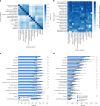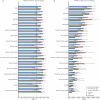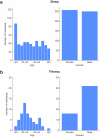A personal health large language model for sleep and fitness coaching
- PMID: 40813712
- PMCID: PMC12532688
- DOI: 10.1038/s41591-025-03888-0
A personal health large language model for sleep and fitness coaching
Abstract
Although large language models (LLMs) show promise for clinical healthcare applications, their utility for personalized health monitoring using wearable device data remains underexplored. Here we introduce the Personal Health Large Language Model (PH-LLM), designed for applications in sleep and fitness. PH-LLM is a version of the Gemini LLM that was finetuned for text understanding and reasoning when applied to aggregated daily-resolution numerical sensor data. We created three benchmark datasets to assess multiple complementary aspects of sleep and fitness: expert domain knowledge, generation of personalized insights and recommendations and prediction of self-reported sleep quality from longitudinal data. PH-LLM achieved scores that exceeded a sample of human experts on multiple-choice examinations in sleep medicine (79% versus 76%) and fitness (88% versus 71%). In a comprehensive evaluation involving 857 real-world case studies, PH-LLM performed similarly to human experts for fitness-related tasks and improved over the base Gemini model in providing personalized sleep insights. Finally, PH-LLM effectively predicted self-reported sleep quality using a multimodal encoding of wearable sensor data, further demonstrating its ability to effectively contextualize wearable modalities. This work highlights the potential of LLMs to revolutionize personal health monitoring via tailored insights and predictions from wearable data and provides datasets, rubrics and benchmark performance to further accelerate personal health-related LLM research.
© 2025. The Author(s).
Conflict of interest statement
Competing interests: This study was funded by Google LLC. All authors are employees of Alphabet and may own stock as part of the standard compensation package.
Figures













References
-
- Nori, H. et al. Can generalist foundation models outcompete special-purpose tuning? Case study in medicine. Preprint at https://arxiv.org/abs/2311.16452 (2023).
-
- Saab, K. et al. Capabilities of Gemini models in medicine. Preprint at https://arxiv.org/abs/2404.18416 (2024).
MeSH terms
LinkOut - more resources
Full Text Sources
Medical

